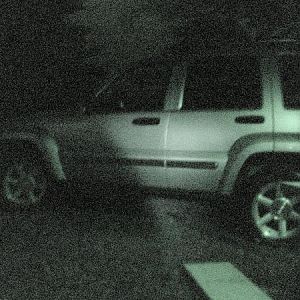Hello, I saw some confusion surrounding our batteries and wanted to help out however possible. BlueTops have threaded top posts, but are otherwise identical internally to their YellowTop (BlueTop/light gray case) and RedTop (BlueTop/dark gray case) counterparts. We strongly recommend using YellowTops for winching or any other deep-cycling applications. Winches should always be attached to top posts.
Johnson Controls has continually improved the production process of Optima batteries, including the continued use of 99.99% pure, virgin lead, since acquiring the company in 2000. Most of the “bad” batteries returned to us today are merely deeply-discharged and work fine when properly recharged. This video explains how to recharge a deeply-discharged AGM battery-
http://www.youtube.com/watch?v=dIoaL3DWWEg
Weston, whether you are choosing larger capacity batteries or multiple batteries, it’s a good idea to make sure your alternator is up to the task of charging them properly. Dimming headlights indicate an alternator is not supplying enough power and given the demands you are putting on your electrical system, a high output alternator might be a wise investment. It might also be a good time to check your grounds. There is no such thing as a ground that is “too good” and one-wire alternators are especially sensitive to good, quality grounds. As JeepJeepster mentioned, doing “the Big 3” upgrade is cheap insurance in the long run.
Although our batteries are sealed, it is important that any lead-acid battery has proper ventilation. ALL lead-acid batteries can vent gas. Traditional wet batteries do this immediately when recharged, since they are not sealed. Sealed lead-acid batteries like Optimas and all other “dry cell” AGM batteries have safety release valves that should only vent if they are seriously overcharged.
Under normal operating conditions, an AGM battery will not vent gas. Since alternators or chargers can fail, the safest and correct mounting method for enclosed spaces, like passenger compartments, is to make sure that any possible gas venting will escape to the outside of the vehicle. If someone custom-mounts a battery in a passenger compartment we recommend venting the battery to the outside of the vehicle as well. Optima group 27, 51, 78, 34C, and 31 batteries all have ports for connecting a vent hose. Other AGM manufacturers can tell you which of their batteries have ports for venting.
Although people do it anyway, we would never recommend installing an unvented battery in any enclosed space, because there’s a legitimate, albeit unlikely, safety risk involved.
For example, IF there is a voltage regulator failure, and IF the battery is severely overcharged, and IF this goes unnoticed, and IF the battery vents because the internal pressure exceeds the release pressure of the vents, the gasses are both flammable and toxic. This may sound like a lot of “ifs,” but attorneys and engineers get paid to plan for every worst-case scenario. If you have any other questions, I’ll do my best to answer them.
Jim McIlvaine
eCare Manager, OPTIMA Batteries, Inc.
www.facebook.com/optimabatteries









